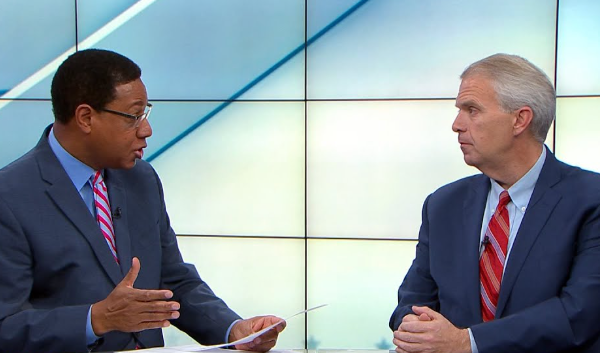In the United States, two out of every three counties are without a local newspaper and local television coverage is often spotty or non-existent in those places.
Dr. Richard Watts is the director of the Center for Community News at the University of Vermont. He stresses the importance of addressing this crisis. “Without local news, people don’t know what’s going on and they are less likely to engage in their community. They are more likely to turn to ideological competing news bubbles which increase polarization and undermine democracy.”
He is also critical of what he says is happening in commercial media.
“Public service mission is to do public good. Information is a public good and it should be freely available to the population. Commercial news [outlets] are now used as advertising vehicles.”
Watts spoke recently to a packed auditorium at the University of Mississippi School of Journalism and New Media. Joining him was Marion Walker, managing editor for local news at The Marshall Project, a nonprofit news organization that describes itself online as a site “that seeks to create and sustain a sense of national urgency about inequities within the U.S. criminal justice system.”
Both men asserted that nonprofit newsrooms have a role to play in addressing gaps in news coverage.
“We found that people are willing to invest in local news,” Walker said.
And investment in nonprofit news appears to be growing. The Institute for Nonprofit News (INN) reported a 17% growth in the number of new nonprofit newsrooms in 2022. INN also reported that “roughly half of nonprofit news outlets are focused on local issues (184 newsrooms), with the rest split between state and regional coverage (104 outlets) and those focused on national or global issues (106 outlets).”
The Marshall Project is one of those more narrowly focused sites.
“Our mission is to expose injustices and things in the justice system that are systemically wrong,” Walker said. In the last few months, he said the site has increased the budget for new projects and created internships for students.
“Our business model is based on collaborating with universities and bringing interns in every year. Students writing [for us] help us see new stories and bring other perspectives,” Walker said.
Watt mentioned that universities can play a bigger role in addressing the lack of local news. “They have all the resources and abilities to write, produce, and tell the stories.”
Yet, even with nonprofit sites coming online and more funding available, there are challenges for some sites when it comes to finding the “right” funders.
“The main thing is that the Marshall Project makes sure that it is funded with unrestricted funds to produce stories that matter without having to answer to anybody,” said Walker.
Watts indicated that the number of nonprofit newsrooms is expected to double in the next couple of years. These numbers are promising; however, even with the projected increases, nonprofit news sites will likely be filling just a small piece of America’s local news hole in the foreseeable future.








